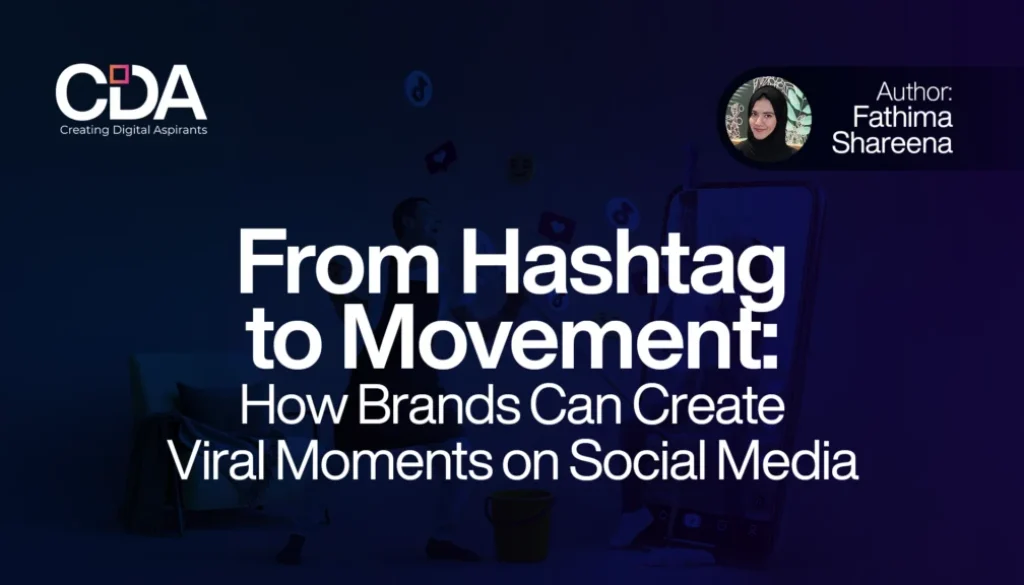From Hashtag to Movement: How Brands Can Create Viral Moments on Social Media
In the fast-paced world of social media, a single hashtag can spark a wildfire of conversation, turning a brand’s marketing campaign into a cultural moment. But how does a brand move beyond simply riding the viral wave to actually creating one of its own? It all starts with understanding how to connect emotionally with audiences and embrace moment marketing.
Table of Contents
The Power of Moment Marketing
Moment marketing is about tapping into real-time events or cultural shifts to create content that resonates deeply with an audience. It’s about showing that a brand is not just a logo but a part of the larger conversation happening in the world. By being timely, relevant, and authentic, brands can create experiences that feel personal to consumers, making them more likely to share and engage.
When a brand taps into the right moment, it doesn’t just get attention—it fosters connection. And that’s the magic of a viral moment.
How to Create a Viral Moment on Social Media
Know Your Audience and Their Culture
To create something that resonates, brands need to understand their audience’s passions, humor, and what drives them emotionally. This means looking beyond demographics and really diving into their interests and values. Brands that understand the cultural trends and sentiments of their followers can create content that feels natural and authentic.
Use Hashtags Strategically
Hashtags are the bridge between a brand’s content and the audience’s conversations. A well-crafted hashtag can spread across social media, giving your campaign a life of its own. But it’s not just about creating any hashtag—it’s about crafting something memorable, easy to use, and relevant. #ShareACoke, anyone?
Make It Personal
People love to be seen and heard. Social media thrives on user-generated content, so giving your audience the chance to participate is key. This could mean creating campaigns that invite people to share their own stories, images, or videos related to the campaign’s theme. When users feel involved, they’re more likely to spread the word.
Leverage Real-Time Trends
Staying on top of current events, holidays, or even viral memes can allow brands to jump on trends in a meaningful way. But here’s the catch—don’t force it. The worst thing a brand can do is come off as trying too hard to be relevant. Authenticity is everything, so make sure your response fits naturally into the ongoing conversation.
Create a Strong Emotional Connection
Viral moments often strike a deep emotional chord with audiences. Whether it’s humor, nostalgia, or pure joy, emotion drives engagement. The goal is to create content that makes people feel something—because when people feel something, they share it.
Coca-Cola’s #ShareACoke Campaign: A Case Study in Viral Moments
Let’s look at one of the most iconic campaigns that turned a hashtag into a global movement: Coca-Cola’s #ShareACoke.
In 2011, Coca-Cola launched its #ShareACoke campaign in Australia, replacing its iconic logo on bottles with 150 of the most popular names. The idea was simple: encourage people to buy a Coke with their name or the name of a friend and share it with others. It was personal, fun, and offered a unique twist on a product people already knew and loved.
But Coca-Cola didn’t stop there—they turned this into a conversation. They encouraged people to take photos with their personalized bottles and share them on social media using the hashtag #ShareACoke. This gave users a reason to post, share, and engage with the brand on a personal level. The hashtag spread like wildfire, and people around the world began sharing their Coke moments.
By embracing user-generated content and emotional connections, Coca-Cola turned a simple marketing tactic into a cultural phenomenon. The campaign was rolled out to other countries, becoming a global success that resonated with millions. In fact, the campaign was so successful that it was extended for multiple years, each time finding new ways to make people feel special and connected to the brand.
Why It Worked
Personalization
The use of names made the campaign incredibly personal, allowing individuals to feel like the product was made specifically for them. It wasn’t just about selling a drink—it was about creating an experience.
Emotional Connection
The simple act of sharing a Coke became a moment of joy, friendship, and connection. Whether you were giving a Coke to a loved one or sharing a laugh with a stranger, the campaign had a feel-good, community-driven energy.
Social Media Integration
Coca-Cola fully embraced the power of social media by encouraging user participation. The #ShareACoke hashtag gave consumers the chance to amplify the campaign and spread it to their networks, turning every post into a tiny advertisement.
Timeliness and Relevance
The campaign hit at a time when people were craving connection and personalization more than ever. Coca-Cola capitalized on that sentiment, creating a campaign that felt deeply relevant.
Takeaway: Be Authentic and Engaging
Creating a viral moment on social media doesn’t happen by accident. It’s a combination of knowing your audience, tapping into their emotions, and offering them an opportunity to participate. Coca-Cola’s #ShareACoke campaign is a prime example of how a brand can use personalization, emotional resonance, and user-generated content to spark a viral movement.
So, if you want your brand’s next hashtag to go beyond a fleeting trend and evolve into a movement, focus on creating something personal, relevant, and emotionally engaging. It’s all about making your audience feel something and inviting them to share that experience with the world. After all, viral moments are not just about going viral—they’re about creating connections that last.



